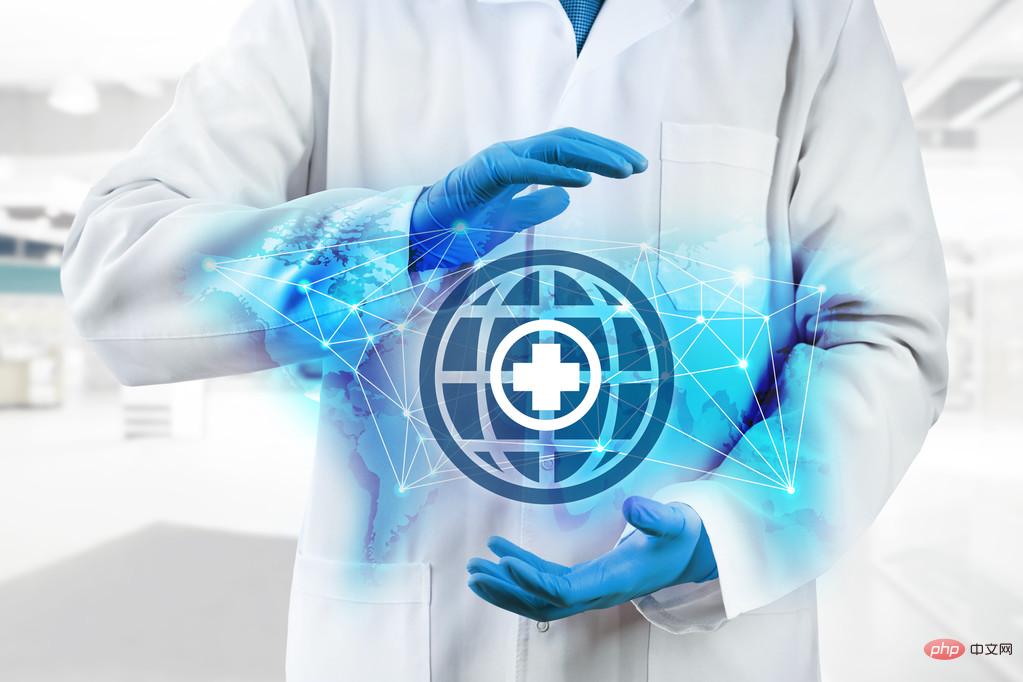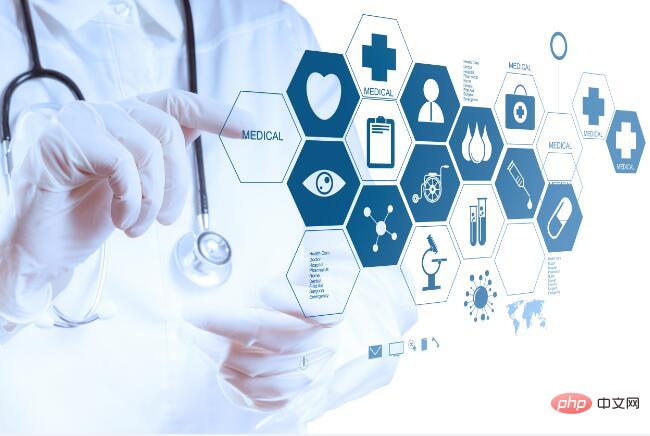

Over the past few years, healthcare systems in regions around the world have experienced more change than almost any other industry.
Technologies that existed before the pandemic but were not widely used have been elevated to prominence, accelerating changes that will impact the entire healthcare ecosystem.
Virtual office visits, mobile telemedicine, health wearables, remote diagnostics, remote disease management, mRNA medicines, genetic screening and personalized medicine are just a few of the transformations that are growing now and in the future part.
All living people have their own personal health, wellness needs, diets they should follow, and even special medications or treatments they must receive in order to improve their quality of life or maintain their lives.
Determining each person’s individual health and wellness needs, or recommending lifestyle changes to each person that are specifically tailored to his or her needs may seem nearly impossible, but thanks to some transformative hard-trend technologies this year and beyond After rapid development, our dream soon became a reality.

Wearabledevices will increasingly be used in personal health tracking applications as 5G and other technologies converge to create new value streams and accelerate growth. Apple's smartwatches are increasingly equipped with health sensors and software, joining Google, Samsung and others in a fierce battle for market share.
The expanding array of new sensors combined with smart software and applications will drive further innovation and sales of other wearable technologies designed to uniquely monitor an individual's health and other effects on their body Behavioral indicators of health impact. In some cases, as Apple Watch ads have already shown, these technologies can save lives. For example, smart patches attached to the skin will be increasingly used to enable remote disease management, diagnosis, and wireless transmission of general health information to mobile devices. Many of these devices already exist, such as patches that allow diabetics to check their blood sugar levels without pricking their fingers.Satellites such as OneWeb and Starlink consist of thousands of massive small satellites operating in low Earth orbit as well as ground-based reception designed to provide internet service to anywhere on Earth server network. By providing global broadband access, these systems will provide individuals and businesses, large and small, with broader access to a vastly expanded global network of people and connected products.
The advantages of this level of healthcare connectivity, represented by 5G, could create billions of dollars’ worth of new businesses designed to help the above-mentioned wearable technologies become effective faster than currently possible. This will provide important improvements to healthcare, particularly as it relates to emergency response and the need for rapid diagnosis when wearers of health-related technology encounter medical events. High connectivity also means it will be easier to connect with medical professionals or, in the event of a medical emergency, to get immediate help whenever an emergency occurs. 5G comes in many variations, including high-speed and low-latency, and 5G can be deployed in public or private networks in compliance with all HIPAA guidelines.Synthetic Biologyis a rapidly growing field that combines biotechnology, genetic engineering, molecular engineering, and computer science to design and build engineered biological systems. Applications include processing information, manufacturing materials and structures, producing energy, manipulating chemicals and even producing food.
CRISPRis a revolutionary gene editing technology that can be used to create human disease cell models and genetically modified organisms to simulate diseases and correct genetic mutations. It may be used in the future to prevent certain diseases from being transmitted to Newborn.We have all witnessed the breakthrough of mRNA technology, which was used to successfully develop COVID vaccines in record time and is now used to fight diseases such as HIV and cancer.
But the incredible amount of research required to develop these medical and biological breakthroughs has been greatly accelerated by advances in artificial intelligence and other technologies that can handle most of the calculations and processes involved, and will only Open the door to more innovative discoveries.
Augmentation technology aims to improve human physical and cognitive abilities.Augmented Mind Technologieswill increasingly provide real-time actionable insights and knowledge derived from AI-enabled data analysis of large datasets to augment human thinking and problem-solving capabilities . Healthcare professionals will increasingly use it to make more informed decisions and solve problems faster.
Humans and artificial intelligence will increasingly have a symbiotic relationship in which each needs the other for optimal performance.Enhanced Movement TechnologyEnhances human body functions. A hearing aid is an example ofsensory augmentation; a prosthetic leg is anaccessory augmentation; a 95-pound nurse in Japan wears a powered exoskeleton to lift a 200-pound patient On the bed, she was using afunction-enhancingdevice.
This type of technology is also a preventive advancement, keeping individuals out of the physical therapy clinic by helping them avoid workplace and personal life injuries. One example is General Motors workers wearing powered exoskeletons to reduce arm, hand and joint problems while assembling cars. All of our physical parts and systems, including our genes, can be enhanced, enhanced, or protected, thanks to accelerating technology-driven hard trends that are already rapidly evolving.
Virtual Meeting Software and ServicesTrend Five: Remote working using virtual conferencing software and services will continue and expand, but many people will return to the office and increasingly find the use of face-to-face to improve communication , a new focus on collaboration, innovation and sales.
Supported remote work has proven to be an effective way to leverage human resources in the healthcare ecosystem, as well A new way to retain and attract talent.Telemedicine not only allows many people who need to consult a doctor or get medical questions addressed without leaving home; it has now become a way to bring key elements of medical practice into communities and remote areas , these communities and remote areas often have to travel long distances to see a doctor in person.
This is not to say that going forward we will only attend doctor’s appointments virtually. Mixed use is likely to emerge in healthcare, just as it is in the job market, with many employees combining remote work with in-office work.
My prediction is that we will live in a world that is both. Thinking exponentially about how we use remote communication services like Zoom, Teams or Skype, and the ever-expanding use of what we know as Virtual Reality and the Metaverse, means all medicine that utilizes these technologies There will be room for innovative breakthroughs in all fields. As connected devices proliferate and the world becomes more interconnected, millions more will have full access to healthcare.
Leverage these trends with an anticipatory mindset
 As we have advocated for years, “hard trends” are things that are bound to happen in the future. These five technology trends are impacting the healthcare industry in multiple ways and are hard trends in their own right, changing industry practices both internally and customer/patient-facing. So, as a solopreneur or a forward-thinking healthcare leader, how can you take advantage of these advantages?
As we have advocated for years, “hard trends” are things that are bound to happen in the future. These five technology trends are impacting the healthcare industry in multiple ways and are hard trends in their own right, changing industry practices both internally and customer/patient-facing. So, as a solopreneur or a forward-thinking healthcare leader, how can you take advantage of these advantages?
About the top five tech trends featured in this blog, most of them It’s all about our personal health and well-being as humans, whether it’s through a wearable device or a virtual connection with a medical professional anywhere in the world. Likewise, technology as a partner in expanding our physical capabilities is another common concept.
What unsolved healthcare problems can now be solved using these technologies? Can we use these technology-driven trends to preemptively solve problems that haven’t arise yet, before they impede progress? …These are all good questions.
Currently, digital transformation in healthcare is still in its early stages, which presents huge opportunities for prospective leaders!
To foresee the future, please see "Top Technology Hard Trends Shaping 2022":https://www.burrus.com/seethefuture
The above is the detailed content of Five technology trends impacting the healthcare industry. For more information, please follow other related articles on the PHP Chinese website!
 Application of artificial intelligence in life
Application of artificial intelligence in life What are the applications of the Internet of Things?
What are the applications of the Internet of Things? What is the basic concept of artificial intelligence
What is the basic concept of artificial intelligence The m2m concept in the Internet of Things
The m2m concept in the Internet of Things The role of base tag
The role of base tag How to share a printer between two computers
How to share a printer between two computers How to sort in excel
How to sort in excel Windows cannot complete formatting hard disk solution
Windows cannot complete formatting hard disk solution



